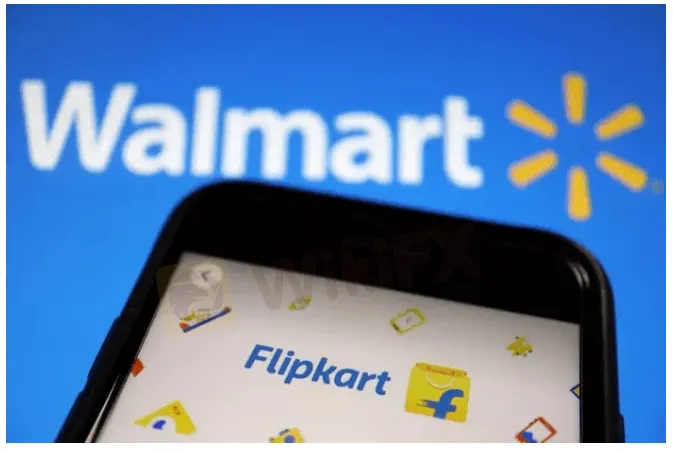简体中文
繁體中文
English
Pусский
日本語
ภาษาไทย
Tiếng Việt
Bahasa Indonesia
Español
हिन्दी
Filippiiniläinen
Français
Deutsch
Português
Türkçe
한국어
العربية
Walmarts Flipkart raises IPO valuation target to $60-70 billion, eyes 2023 listing-sources
Abstract:Walmarts Indian e-commerce company Flipkart has internally raised its IPO valuation target by around a third to $60-70 billion, and now plans a U.S. listing in 2023 instead of this year, two sources with direct knowledge of the plan told Reuters.

Flipkart, which competes with Amazon.com Inc in Indias booming e-commerce space, had earlier set an IPO valuation goal of $50 billion, Reuters has reported.
The main reason for waiting for the IPO is due to Flipkarts internal plan to boost valuations further by focussing on two of its relatively new businesses — online healthcare services and travel bookings, two of the sources with direct knowledge said.
Two separate sources familiar with Flipkarts plans said the ongoing global market turmoil sparked by the Russia-Ukraine crisis also forced the Indian company to reconsider its timeline.
Flipkart acquired Indian travel booking website Cleartrip in 2021, and this week launched a “Health+” app to offer medicines as well as other healthcare products and services.
“Flipkart thinks there is an even bigger upside of valuation than originally envisaged … The travel business has started showing great signs already for them,” said the first source.
The first source said the IPO valuation target could be as high as $70 billion, while the second said it could be between $60-65 billion.
Flipkart didnt respond to a request for comment.
Asked about the IPO‘s timeline, Walmart CFO Brett Biggs told an analysts conference in December that Flipkart’s business was “performing almost exactly like we thought” and an “IPO is still very much in the cards”, without specifying when the company will list.
The listing, according to sources, is now being planned for early-to-mid 2023. Flipkart is incorporated in Singapore and wants to list in the United States, they added.
The IPO planning comes amid growing protests from Indian brick-and-mortar retailers that Flipkart and Amazon bypass federal regulations and favour select sellers, allegations the companies deny. India is also working on a slew of e-commerce sector regulations that could spook foreign giants.
Walmart acquired a roughly 77% stake in Flipkart for about $16 billion in 2018 – its biggest deal ever – and said later that year that it could take the company public in four years.
Just last year, Flipkart raised $3.6 billion in a funding round, giving it a valuation of $37.6 billion.
That fund raising helped bolster the company‘s financial position, and it had enough cash right now for expansion, meaning an IPO wasn’t a necessity at this stage, said one of the sources.
Indias IPO market has slowed after having boomed as enthusiastic retail investors and a pandemic-induced flood of easy money pushed prices to record highs, encouraging a slew of Indian tech companies like Paytm and Zomato to go public.
More than 60 companies made their market debut in India in 2021 and raised a total of more than $13.7 billion, which was more than the previous three years combined.

Disclaimer:
The views in this article only represent the author's personal views, and do not constitute investment advice on this platform. This platform does not guarantee the accuracy, completeness and timeliness of the information in the article, and will not be liable for any loss caused by the use of or reliance on the information in the article.
Read more

The president of @Liberland, @Vít Jedlička come on stage, dialogue on trading security.
The 2025 WikiEXPO Hong Kong Station is about to grandly open. the president of @Liberland, @Vít Jedlička come on stage, dialogue on trading security.

Countdown: 1 day.WikiEXPO2025's first stop, Hong Kong, is about to open.
⏰ Countdown: 1 day. WikiEXPO2025's first stop, Hong Kong, is just tomorrow. Focus on transaction security and explore new investment opportunities. ???? Get ready to start now. See you tomorrow.

JustForex vs JustMarkets: A Comprehensive Comparison in 2025
Selecting the right forex broker can make the difference between trading success and frustration for most investors, especially retail investors. As retail traders gain unprecedented access to global markets, the choice between platforms like JustForex and JustMarkets becomes increasingly significant. Both brokers offer some shining features within the forex and CFD trading space, but their approaches differ in some areas.
Vault Markets Review 2025: Live & Demo Accounts, Withdrawal to Explore
Vault Markets, a South African-based broker, has attracted much attention in recent days, particularly within its region. This online broker only offers access to focused trading opportunities on Indices, Currencies, Energies, and Metals, yet it shines on low minimum deposits plus various bonus programmes, which would encourage more investors, especially beginners, to trade with a small budget. However, Vault Markets operates outside of the authorized scope, so we don't consider it solid to trade with.
WikiFX Broker
Latest News
Why Are Financial Firms Adopting Stablecoins to Enhance Services and Stability?
Experienced Forex Traders Usually Do This Before Making a Lot of Money
Octa vs XM:Face-Off: A Detailed Comparison
When High Returns Go Wrong: How a Finance Manager Lost RM364,000
Bridging Trust, Exploring Best—WikiEXPO Hong Kong 2025 Wraps Up Spectacularly
Interactive Brokers Expands Crypto Trading with Solana, XRP, Cardano, and Dogecoin
Fidelity Investments Explores Stablecoin Innovation in Digital Assets Sector
Why More People Are Trading Online Today?
SEC Ends Crypto.com Probe, No Action Taken by Regulator
Broker Comparison: FXTM vs XM
Currency Calculator







